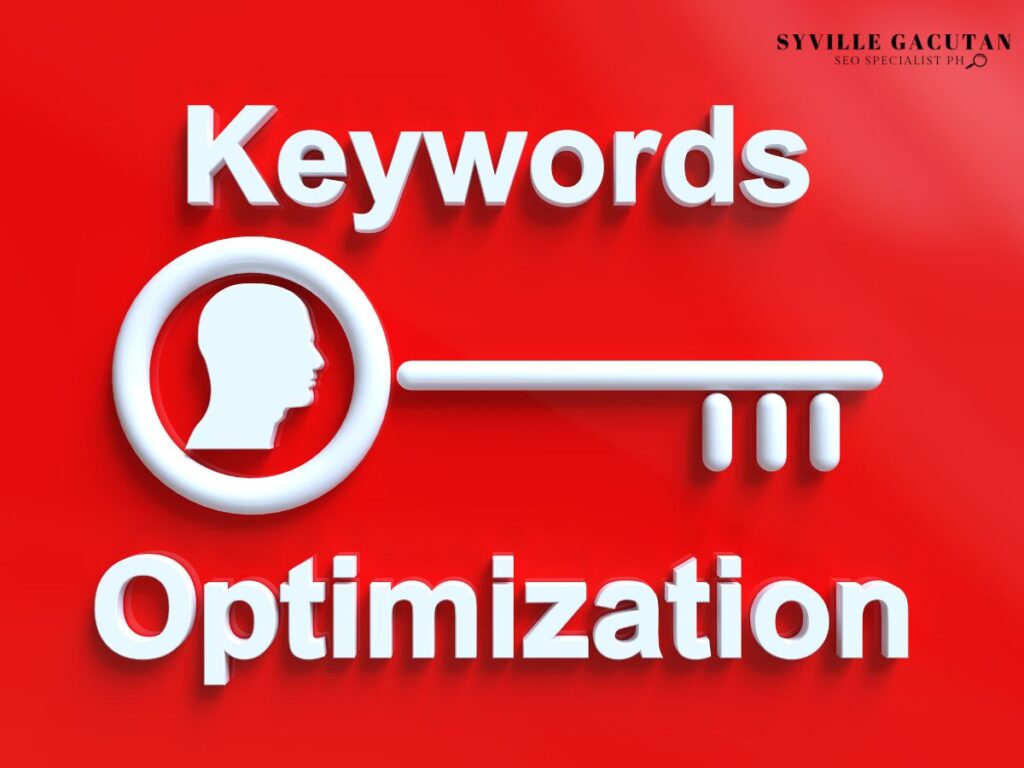
5 Key SEO Tactics to Elevate Content Visibility
Elevating content visibility in search engine results requires implementing several key SEO tactics. Start by carefully researching and optimizing your keywords to be certain that your content is in line with search intent. Enhance on-page SEO by improving meta tags, user experience, and mobile optimization. Off-page techniques like link building and social sharing boost authority and reach. Use internal linking to enhance website usability and distribute link equity. Continue to evaluate and modify your tactics in light of performance metrics and algorithm changes to maintain relevancy. Explore further to grasp the comprehensive benefits of using SEO to enhance content visibility.
Key Takeaways
- Explore keyword research to truly grasp what your audience is searching for, making your content more relevant and easier to discover.
- To keep users interested, improve your on-page SEO by making changes to meta tags, streamlining the user experience, and ensuring sure your website works and looks fantastic on mobile devices.
- Create deep, meaningful relationships with influencers and other websites to obtain high-quality backlinks that raise your website’s search engine ranks and credibility.
- Use internal linking thoughtfully to guide visitors through your site, making it easier to navigate while also spreading the SEO benefits across your pages.
- Keep an eye on how your content is performing, and adjust based on what’s working (and what’s not), while staying up to date with any changes in search engine algorithms to stay visible over time.
1. Keyword Research and Optimization

Effective keyword research and optimization are foundational elements of any successful SEO strategy. At the heart of this process lies the identification of long tail keywords, which are phrases typically containing three or more words that capture specific search intent. These keywords are crucial for tapping into niche markets and driving qualified traffic to your content, as they often align closely with the user’s intent, leading to higher conversion rates.
Understanding the search intent underlying the queries your target audience is using is the first step in conducting keyword research. Are they trying to find a particular website, making a transaction, or looking for information? By exploring the subtleties of search intent, one may choose keywords more precisely and make sure that the material produced appeals to potential visitors.
Keyword density, the frequency of a keyword’s appearance in your content, must be managed with precision. Overstuffing keywords can lead to penalties from search engines, while too few may lessen the impact on search rankings. Striking the right balance is key to maintaining content integrity and ensuring optimal visibility.
Competitive analysis plays a critical role in this process as well. By evaluating the keywords that competitors rank for, you can identify potential gaps and opportunities within your niche. This analysis, paired with the use of advanced keyword tools, enables a more effective and strategic approach to keyword optimization.
Tools such as Google Keyword Planner, SEMrush, and Ahrefs provide invaluable insights into keyword volume, competition, and trends, which are essential for crafting a data-driven SEO strategy that enhances content visibility and achieves business objectives.
2. Enhance On-Page SEO
A critical component of increasing content visibility is enhancing on-page SEO, which involves optimizing individual web pages to improve their search engine rankings and attract more organic traffic. This process begins with the strategic use of meta tags, including title tags and meta descriptions, which serve as concise summaries of your page’s content in search engine results. Crafting these tags with relevant keywords can significantly influence click-through rates.
Improving user experience (UX) is another essential aspect of on-page SEO. A seamless UX ensures that visitors stay longer on your site, reducing bounce rates and signaling to search engines that your content is valuable. This can be achieved through intuitive navigation, fast loading times, and mobile optimization.
With the increasing prevalence of mobile browsing, ensuring your website is responsive and easily accessible on various devices is critical for maintaining user engagement.
Content formatting plays a pivotal role in enhancing readability and SEO performance. Utilizing headings, bullet points, and short paragraphs can make your content more digestible, encouraging readers to explore further. Moreover, this structured approach helps search engines better understand the hierarchy and relevance of your information.
Additionally, incorporating image alt text is vital for both accessibility and SEO. Alt text provides a textual description of images, enabling search engines to index them effectively. This practice not only improves the visibility of your images in search results but also enhances the overall accessibility of your website for users with visual impairments.
3. Off-Page SEO Techniques
Off-page SEO is a crucial element in enhancing content visibility and authority across the web. Unlike on-page SEO, which focuses on optimizing individual web pages, off-page SEO involves activities conducted outside of your website to increase its authority and trustworthiness. One of the fundamental techniques in off-page SEO is link building, which involves acquiring hyperlinks from other websites to your own. High-quality backlinks serve as votes of confidence, signaling to search engines that your content is valuable and relevant.
Another important off-page strategy is social sharing. By promoting content through social media platforms, you can reach a broader audience and encourage engagement. This not only increases traffic but also enhances content visibility in search engine results. Furthermore, guest blogging allows you to contribute articles to other reputable sites, positioning you as an authority in your niche and providing opportunities for backlinks.
Influencer outreach is a powerful way to amplify content reach. By collaborating with influencers who have a significant following, you can tap into their audience, thereby increasing your content’s exposure and credibility. Lastly, content promotion through strategic partnerships and collaborations can further boost visibility, driving more traffic and improving search rankings.
Below is a table summarizing key off-page SEO techniques:
| Technique | Purpose | Benefit |
| Link Building | Acquire quality backlinks | Enhance authority |
| Social Sharing | Promote content on social media | Increase reach and engagement |
| Guest Blogging | Write for external sites | Build authority and backlinks |
| Influencer Outreach | Leverage influencer audiences | Amplify content exposure |
| Content Promotion | Collaborate for wider reach | Drive traffic and visibility |
Incorporating these off-page strategies effectively contributes to a comprehensive SEO approach, ensuring your content gains the visibility and authority it deserves.
4. The Power of Internal Linking

Internal linking structure serves as a crucial component of on-page SEO, connecting various pages within a website to enhance navigation and distribute link equity. By strategically utilizing internal links, webmasters can significantly improve their site’s content hierarchy and user experience.
The benefits of a well-organized internal linking system extend beyond mere navigation assistance; they also play a vital role in improving crawl efficiency and ensuring search engines index the most important pages effectively.
One of the primary internal link benefits is the ability to guide users through a logical content journey. By employing thoughtful anchor text strategies, webmasters can provide contextual relevance that signals to both users and search engines the relationship between linked pages.
Effective anchor text not only improves user comprehension but also aids search engines in understanding the thematic connection of content across the site.
Creating a robust content hierarchy through internal linking is essential for highlighting authoritative pages and directing focus where it is most needed. This structured approach helps in distributing link equity, ensuring that high-value pages receive the necessary visibility and ranking potential.
Moreover, enhancing user experience is paramount in retaining visitors and reducing bounce rates. Users are more likely to engage with content when the navigation is intuitive and logical, facilitated by a coherent internal linking strategy.
For search engines, such clarity translates into improved crawl efficiency, allowing for better indexing and ranking results.
5. Analyze and Adapt Strategies

Building a robust internal linking strategy is just one piece of the SEO puzzle; to maintain and enhance content visibility, continuous analysis and adaptation of strategies are imperative. A dynamic approach to SEO involves regularly assessing content performance, ensuring that each piece resonates well with the target audience.
By examining metrics such as page views, bounce rates, and conversion rates, marketers can pinpoint which content elements succeed and which require refinement.
Audience targeting should also evolve with insights gained from data analysis. Understanding shifting demographics and preferences allows content creators to tailor their strategies effectively, ensuring that the right message reaches the right people. This precision in targeting not only enhances engagement but also boosts overall SEO outcomes.
Competitor analysis remains a vital component of this process. By scrutinizing competitors’ strategies, businesses can identify gaps and opportunities in their own approaches. Observing which keywords competitors rank for and the types of content they publish can inform adjustments to one’s own SEO tactics, ensuring competitiveness in the digital landscape.
Trend monitoring is another critical aspect, as staying abreast of industry developments enables swift adaptation to changes in search engine algorithms and user behavior. This proactivity ensures that content remains relevant and visible in search results.
Lastly, user experience should never be overlooked. A seamless, intuitive website design enhances user satisfaction, which, in turn, positively impacts search rankings.
Regularly updating and optimizing site architecture, load times, and mobile compatibility are essential to maintaining an optimal user experience.
Final Thoughts
Implementing these five key SEO tactics is essential for elevating content visibility and driving engagement in a competitive digital landscape. By conducting thorough keyword research, you can align your content with user intent, ensuring that it meets the needs of your target audience. Enhancing on-page SEO through optimized meta tags, user experience improvements, and strategic use of internal linking will significantly boost your content’s search visibility. Additionally, leveraging off-page techniques such as link building and social sharing can further establish your authority and expand your reach. Continuous analysis and adaptation of your strategies, informed by performance metrics, will keep your content relevant and effective over time.
Ready to boost your content’s visibility and drive measurable results? Connect with Syville Gacutan, a skilled SEO Specialist in the Philippines, who can help you implement these powerful SEO tactics and elevate your online presence. Reach out to Syville today and transform your content strategy.